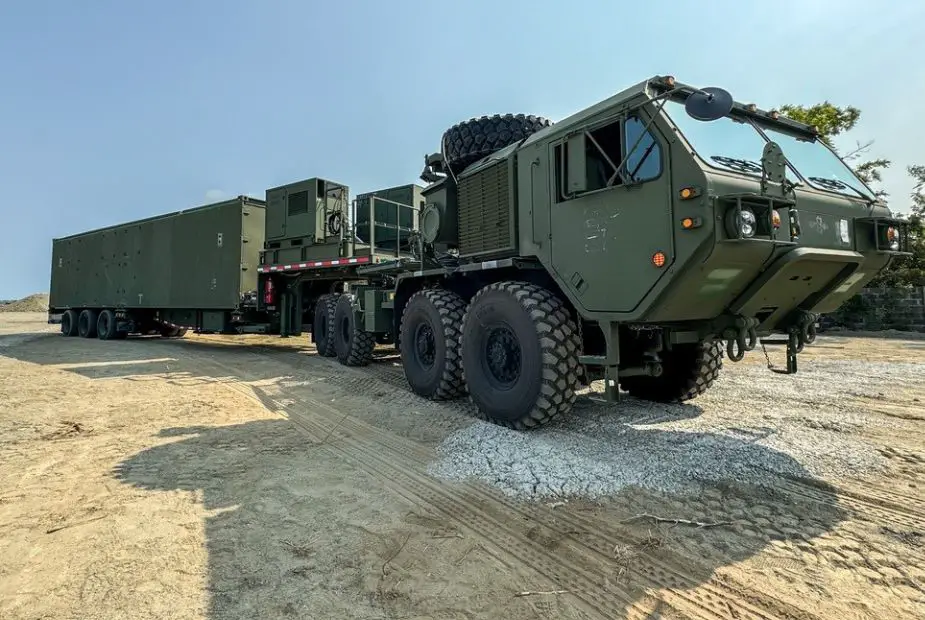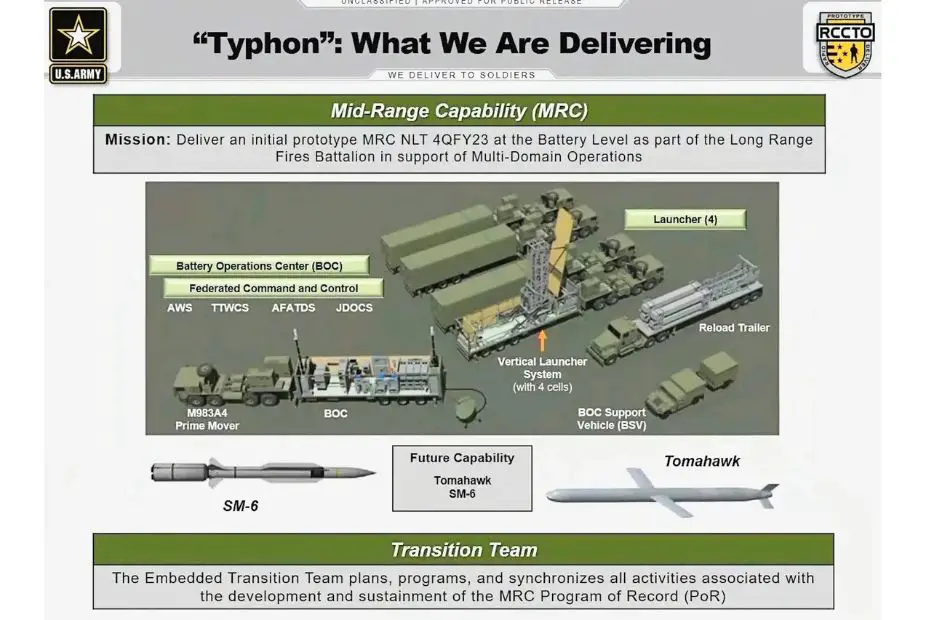The U.S. Army announced on April 7, 2024, that it had deployed its latest ground-based missile system, Typhon/Mid-Range Capability (MRC), to the Philippines for Exercise Salaknib 24, marking its first deployment in the Indo-Pacific region. This system is capable of launching Tomahawk cruise missiles as well as SM-6 multipurpose missiles, which are initially used in a quasi-ballistic mode for land attacks. The arrival of Typhon in the Philippines is a significant signal to Beijing and underscores the U.S. Army's plans to permanently station these systems in what could be called China's backyard.
Follow Army Recognition on Google News at this link

The Mid-Range Capability (MRC) Launcher from Charlie Battery of the 5th Battalion, 3rd Field Artillery Regiment, which is part of the Long Range Fires Battalion under the 1st Multi-Domain Task Force, arrived in Northern Luzon, Philippines, on April 8, 2024 (Picture source: US DoD)
The Typhon system, also known as the Mid-Range Capability (MRC), was air-transported to Luzon, the largest island in the Philippine archipelago, on April 7. It is part of Battery C of the 5th Battalion, 3rd Field Artillery Regiment, which is integrated into the 1st Multi-Domain Task Force (MDTF) based at Joint Base Lewis-McChord in Washington State. This initiative follows the Army's earlier announcement of its intention to deploy a Typhon system abroad, although the exact location and date had not been previously specified.
Details on the extent of Battery C's participation in Exercise Salaknib 24 and the possibility of a live-fire demonstration remain unclear. To date, images released show only a containerized launcher towed by a Heavy Expanded Mobility Tactical Truck (HEMTT) and loaded onto a C-17A Globemaster III transport aircraft from the 62nd Airlift Wing at Joint Base Lewis-McChord. This flight marked the first time elements of the Typhon system were transported by air.
The Typhon weapon system, designed by Lockheed Martin, adapts the naval Mk.41 vertical launch system for land use, enhancing the U.S. Army's ability to address threats in the Multi-Domain Task Force (MDTF) environment. This system includes four launchers, a command center, and logistical support vehicles. It is a key component of the Strategic Fires Battalion, which also includes units equipped with the High Mobility Artillery Rocket System (HIMARS) and Dark Eagle hypersonic missiles.

A presentation slide from the U.S. Army that outlines the components of the full Typhon system (Picture source: US DoD)
Several C-17A flights would be required to move an entire Typhon battery. The precise location of the Typhon system components in the Philippines has not been disclosed, other than that they were delivered to northern Luzon. The current access of American forces to five different sites on the island highlights the strategic importance of this region for the United States, especially in terms of consolidating the American-Philippine alliance.
Brigadier General Bernard Harrington, head of the 1st MDTF, emphasized the significance of this deployment for bilateral relations with the Philippines, America's oldest treaty ally in the region. This deployment enhances joint operational capabilities and demonstrates the U.S. commitment to a free and open Indo-Pacific.
By deploying even a single Typhon launcher to the Philippines, the Army demonstrates significant capability, as Typhon can use Tomahawk missiles to strike land and maritime targets up to about 1,000 miles away. Additionally, the adaptation of SM-6 for surface strikes offers increased flexibility. From its strategic location in northern Luzon, Typhon's missiles can cover the Luzon Strait and reach the Chinese mainland and various military installations across the South China Sea. This point is particularly relevant due to current tensions between Beijing and Manila over control of Scarborough Shoal.
In 2016, an international tribunal ruled in favor of the Philippines' claims over the shoal, a decision rejected by Chinese authorities. Recent incidents, including confrontations involving the Chinese Coast Guard and the Philippine Navy, have prompted Manila to enhance its defense capabilities through acquisitions such as HIMARS and by participating in joint military exercises with the United States and other allies.
Salaknib is an annual joint exercise conducted by the Philippine Army with the support of the U.S. Army Pacific. It aims to improve the operational capabilities and interoperability of both the U.S. and Philippine Armies across various military domains, while also reinforcing the partnership between these two historic allies.
Defense News April 2024
















